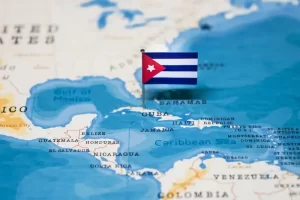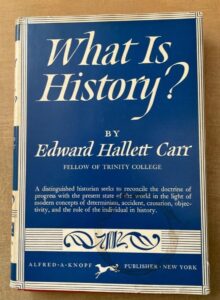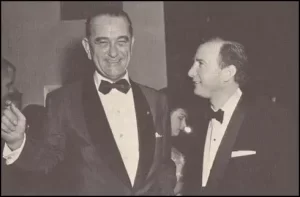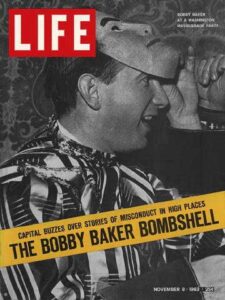HERE you will find collected articles and presentations by one of our most knowledgeable and respected JFK researchers: educator, essayist, and historian John Simkin. Please Bookmark this page for updates.
While studying at the Open University John Simkin became convinced by the ideas of Jerome Bruner on active learning. Since he began teaching history in 1978 he has attempted to produce materials that enable active learning to take place. This has included educational computer programs such as Attack on the Somme, Wall Street and The Russian Revolution. The internet provides the best opportunity so far to make active learning a reality.
Over the last twenty years he has written several history books including Gandhi (1987), The Vietnam War (1988), Race Relations in the United States (1988), Slavery: An Illustrated History of Black Resistance (1988), Hitler (1988), Stalin (1987), The Roman Empire (1991), Making of the United Kingdom (1992), Expansion, Trade and Industry (1992), The Medieval Village (1996), The Norman Invasion (1996), etc.
In September, 1997, along with Judith Harris Simkin, Mr. Simkin established the Spartacus Educational website and over the next six years produced online material for the Daily Telegraph, the European Virtual School and The Guardian and its educational website, Learn. He was also a member of the European History E-Learning Project (E-Help), a project to encourage and improve use of ICT and the internet in classrooms across the continent. He currently teaches several courses at the University of the Third Age, including Understanding the Modern World: The Romans to the Information Society and History of Ideas.
Mr. Simkin has published ten e-books, Charles Dickens: A Biography (October, 2012), First World War Encyclopedia (October, 2012), Assassination of John F. Kennedy Encyclopedia (November, 2012), Gandhi: A Biography (December, 2012), The Spanish Civil War (December, 2012), The American Civil War (December, 2012), Henry VII (September, 2015), Henry VIII (September, 2015), Anne Boleyn (September, 2015) and Mary Tudor (September, 2015). He is the author of, Using New Technologies to Enhance Teaching and Learning in History (December, 2012), and in September 2015 was one of the historians interviewed for the BBC documentary, The Hollywood Spy.
As of October, 2019, the Spartacus Educational website contained 21,036,905 words and 33,196 sources. Spartacus Educational is committed to producing free content, especially to those countries that find it difficult to purchase books.
You can find a more detailed autobiography here: John Simkin
“It is impossible to understand the assassination of JFK without grasping that there is an overall political conspiracy against the democratic process.” –– John Simkin, founder of Education Forum.
This what ChatGPT AI said on 26th May 2023:
Spartacus Educational is an educational website that provides a wide range of resources and materials related to history, politics, and social issues. It was created by John Simkin, a former history teacher, and is named after the famous Roman gladiator and rebel leader, Spartacus.
The website offers articles, biographies, and primary source documents on various historical topics, covering a wide range of periods and subjects. It aims to promote critical thinking and provide in-depth information to educators, students, and the general public.
Spartacus Educational covers a diverse range of topics, including world history, wars, revolutions, famous individuals, social movements, and more. The content includes well-researched articles, images, and interactive resources to engage and educate visitors.
The website is known for its emphasis on presenting historical events and figures in a balanced and unbiased manner. It encourages users to explore different perspectives and interpretations, fostering a deeper understanding of complex historical events.
Overall, Spartacus Educational is a valuable resource for anyone seeking reliable and comprehensive information on a wide range of historical topics.
Simkin’s work on Spartacus Educational has garnered recognition and acclaim. His dedication to research and education has made him a respected figure within the history community. While specific personal details about John Simkin may be limited, his contributions to history education through the Spartacus Educational platform have left a lasting impact.
*****
The AM/WORLD PROJECT
 10 April, 2025 | By John Simkin
10 April, 2025 | By John SimkinHowever, it is not clear that the Kennedy administration was aware of the AM/WORLD project. Arthur Schlesinger explained to Anthony Summers in 1978 why the CIA did not want President Kennedy to negotiate with Fidel Castro during the summer of 1963. He pointed out that the head of the CIA’s Cuba unit, Desmond FitzGerald, masquerading as an American Senator, had told Rolando Cubela that a coup against Castro would have the full backing of the United States Government: “The CIA was reviving the assassination plots at the very time President Kennedy was considering the possibility of normalization of relations with Cuba – an extraordinary action. If it was not total incompetence – which in the case of the CIA cannot be excluded – it was a studied attempt to subvert national policy.” (10)
Spartacus Educational is widely recognized as an invaluable online resource. To help keep Spartacus a viable research tool, you can help by doing the following: (1) Do not use ad-blocker. (2) Share Spartacus pages via Twitter, Facebook, etc. (3) Make a small donation or a small monthly subscription.
*****
What is History?
LBJ
Reports circulated in Washington that the White House was pushing the Baker investigation to embarrass Lyndon Johnson: “Kennedy wants to use the Baker affair to dump Lyndon from the ticket next year.” (5) Robert Kennedy later denied this: There were a lot of stories that my brother and I were interested in dumping Lyndon Johnson and that I’d started the Bobby Baker case in order to give us a handle to dump Lyndon Johnson. Well, number one, there was no plan to dump Lyndon Johnson. That didn’t make any sense. Number two, I hadn’t gotten really involved in the Bobby Baker case until after a good number of newspaper stories had appeared about it…. There were a lot of stories then, after November 22, that the Bobby Baker case was really stimulated by me and that this was part of my plan to get something on Johnson. That wasn’t correct.” (6)
ADDENDUM:
While on the subject of LBJ, throughout his presidency, he surreptitiously recorded his telephone conversations. All told he recorded over 800 hours of discussions on the telephone. He told close aides that he did this for two main reasons. (i) It would help him write his memoirs; (ii) He could use this information to apply pressure (blackmail) on politicians and businessmen.
*****
ADDITIONAL ARTICLES, POSTS, ESSAYS
Robert F. Kennedy was America’s First Assassination Conspiracy Theorist
JFK Assassination: What Happened in the Trauma Room
The Lyndon B. Johnson Tapes and the JFK Assassination
The Death of Bernardo De Torres
Kennedy and King Family Members and Advisors Call for Congress to Reopen Assassination Probes
The Secret Files of James Jesus Angleton
Ben Bradlee and the death of Mary Pinchot Meyer
Yuri Nosenko and the Warren Report
The KGB and the JFK Assassination
The History of Fascism: Are Vladimir Putin and Donald Trump Fascists?
* * *
10 September, 2025 – On the Death of Ruth Paine
Education Forum – JFK Assassination Debate
I have held back on commenting on this thread as I wanted to reassess the evidence on Ruth Paine and update my page on her before making a final judgement on her.
Max Good makes this very important point: “Ruth Paine is a Rorschach test, and people who see a conspiracy will continue to see her as a key part of a wider plot, whether witting or unwitting. Those who believe the official story will, by default, laugh off suspicions of Ruth’s dissembling as the paranoid fantasies of conspiracy freaks. In fact, defenders of the official story seemed eager to utilize Ruth’s character as a virtuous elderly Quaker woman to show the ridiculous and delusional nature of those who could suspect her.” (1)
There is no doubt that Ruth Paine was indeed devoted to good works throughout her adult life. According to Priscilla Johnson McMillan: “When she was only thirteen, Ruth spent a summer on a truck farm in Ohio as her way of contributing to the effort to win World War II. The next summer she was with a travelling Bible school, teaching in Ohio and Indiana. (2)
Ruth became a committed Quaker while studying at Antioch College in Yellow Springs, Ohio, with a bachelor’s degree in elementary and secondary education, Ruth taught physical education at Germantown Friends School in Philadelphia. Ruth also became an active member of the American Civil Liberties Union. (3)
Ruth Paine remained committed to her Quaker beliefs throughout her life and was a passionate believer in peace and human rights. However, does this mean that she could not possibly be a CIA asset. In fact, it is the kind of background that a lot of CIA assets had. Tom Braden, head of the CIA’s International Organizations Division (IOD), admitted in a 1975 interview that they were more likely to recruit people on the left as assets than any other group. There were two main reasons for this. Firstly, people would be less suspicious of them as being CIA assets. Secondly, in the case of politicians and trade union officials, the objective would be to move them to the right. (4)
Let us look at first her family connections to the CIA. Jim Garrison pointed out that Paine’s father “had been employed by the Agency for International Development, regarded by many as a source of cover for the C.I.A. Her brother-in-law was employed by the same agency in the Washington, D.C. area.” He also claims that he had tried to “examine the income tax returns of Ruth and Michael Paine, but I was told that they had been classified as secret…. What was so special about this particular family that made the federal government so protective of it?” (5)
James DiEugenio has argued that Ruth Paine had a long history of a possible relationship with the CIA. “Ruth’s father, William Avery Hyde, and her brother-in-law, John Hoke, worked for US AID, which was closely tied to the CIA…. Sylvia Hyde Hoke, worked on a joint CIA/Air Force project… Michael Paine’s mother, Ruth Forbes Young, was best of friends with Mary Bancroft. Bancroft was both an agent and girlfriend of CIA Director Allen Dulles. As author Bill Simpich notes in the film: could Mary have noted to Allen the utility of the Quaker/Unitarian couple in performing surveillance duties on the left? ” (6)
Of course, just because family members are working for the CIA does not mean she is. However, as Bill Simpich points out, this family or friend link, could explain how she was recruited. KGB used the same method to infiltrate MI5/MI6 in the 1930s. There is also evidence that the Paines were involved in collecting evidence on left-wing activists. Buddy Walthers took part in the search of the home of Ruth Paine after the assassination of JFK. Walthers told Eric Tagg that they “found six or seven metal filing cabinets full of letters, maps, records and index cards with names of pro-Castro sympathizers.” (7) James DiEugenio has added: “This is absolutely startling of course since, combined with the work of Carol Hewett, Steve Jones, and Barbara La Monica, it essentially cinches the case that the Paines were domestic surveillance agents in the Cold War against communism.” (8)
If the Paines were CIA assets their behaviour in 1963 becomes more understandable. In September 1962 Michael Paine left the family home but the couple continued to spend a lot of time together. Ruth continued to live in Irving and at a party and February 1963 she was introduced to Marina Oswald and Lee Harvey Oswald by George De Mohrenschildt. On 24th April 1963, Marina and her daughter went to live with Ruth Paine. The reason she gave for wanting to have Marina and her child move in with her was that she wanted to learn Russian, even though she knew the language well enough to teach it. (9)
Barbara La Monica has pointed out: “The Paines are significant in several ways. First, they insured the continued separation of Lee and Marina, allowing Lee to live unencumbered, and with no witnesses to his activities or associates during the principal time leading up to the assassination. Secondly, they provided a storage space for evidence that would be used against Oswald. Almost everything that would convict him in the public mind, including the alleged murder weapon, came out of the Paine’s garage. Also found in the garage, among other things, was the Walker photograph, the backyard photograph, the Klein’s Sporting Goods tear-out order for the rifle, among other things… there was also some radical magazines. One wonders why someone intending to commit a crime would allow such items to be stored in another’s garage, instead of destroying the incriminating evidence. Michael Paine’s testimony is used to confirm that Lee had a rifle, and indeed it had been stored in their garage – in retrospect, of course, because Michael Paine said he never realized it was a rifle… It’s hard to believe that a man like Michael Paine, who had been in combat artillery in Korea, and then in the Army Reserves for six years, could not recognize the feel of a rifle. Especially since it belonged to someone who he considered a person who advocated violence.” (10)
According to the Warren Commission Report, Ruth Paine “always accompanied Marina Oswald whenever Marina left the house with the children.” (11) Lee Harvey Oswald rented a room in Dallas but stored some of his possessions in Ruth Paine’s garage. Ruth also helped Oswald to get a job at the Texas School Book Depository. Upon hearing of a job opening at the depository, Paine personally called the superintendent and heartily recommended Oswald for the position. Oswald was hired within 24 hours. Within the same time period, two calls came in about another position, an airline cargo loader, which paid more than the depository job. The calls came to the Paine household. Oswald never got word of them. (12)
It seems that Ruth Paine was very keen for Lee Harvey Oswald to be in the Texas School Book Depository on the day JFK visited Dallas. That of course does not mean that Ruth Paine knew about the conspiracy to kill JFK. In fact, this is indeed highly unlikely. However, she would have quickly realised that she had played a role in setting him up. No doubt she felt very guilty about this and there are signs that she tried to make amends. For example, after the assassination of JFK she gave a couple of interviews that undermined the case against Oswald. She told the Washington Post: “Marina Oswald felt very favorably toward the President and his family. Most of what she learned of American news was provided by Lee, who translated from newspapers and news magazines. Marina said he never transferred any negative feelings toward President Kennedy.” (13) Paine stated in another interview that, “As far as I know Oswald had never been critical of Kennedy. He had been critical of General Walker, but I never heard him say anything against the President. In fact, it was my impression that he respected him.” (14)
Ruth Paine was an important witness at the Warren Commission and on a couple of occasions she said things that undermined the idea that Oswald was the lone gunman. The Warren Commission concluded that it was at the Paine’s house, in her small garage that Oswald stored his rifle and that he retrieved his rifle the night before the assassination, smuggling it into the Texas School Book Depository the next morning, disguised as “curtain rods”. However, during her testimony she argued that the sling on the rifle in her garage looked quite different from the alleged sling on the rifle found in the Depository building. (15)
Paine also told the Warren Commission that on 31st October 1963, an FBI agent, James Hosty visited her home to discover where Oswald was living. He spoke to both Paine and Marina Oswald about Lee Harvey Oswald. When Oswald heard about the visit he went to the FBI office in Dallas. When told that Hosty was at lunch Oswald left him a message in an envelope. The contents of the envelope have remained a mystery. A receptionist working at the Dallas office claimed it included a threat to “blow up the FBI and the Dallas Police Department if you don’t stop bothering my wife.” Hosty later claimed it said: “If you have anything you want to learn about me, come talk to me directly. If you don’t cease bothering my wife, I will take appropriate action and report this to the proper authorities.” (16)
Ruth Paine might have been protecting the CIA but the same could not be said about the FBI. Her testimony showed that the FBI was fully aware that Oswald was living in Dallas and would be working in a building on the route of JFK motorcade. Yet, they did nothing about making sure that he did not pose a danger to JFK.
Max Good got to know Ruth Paine very well during the making the documentary, The Assassination and Mrs Paine (2022). I think his comments are probably very close to the truth: “Ruth Paine remains an enigma. People see her in completely opposing ways depending on their perspective. I never wanted to demonize Ruth Paine, and I want to emphasize that if we think she was being less than completely honest, we must admit that we also couldn’t know all the details or her true motivations. If Ruth was keeping secrets, could she be doing it out of loyalty to an oath of service, threats of retribution, personal values, or protectiveness over the legitimacy of the government? I had a lot of respect for Ruth’s strength of character and her willingness to speak to people with different perspectives on the assassination. As I’ve said elsewhere, I sometimes suspected that she secretly wanted the truth to come out, but she was under such a burden that she couldn’t say anything too revealing.” (17)
References
(1) Max Good, statement (8 September 2025)
(2) Priscilla Johnson McMillan, Marina and Lee (1977) page 214
(3) Richard Sandomir, New York Times (7th September 2025)
(4) Tom Braden, interview included in the Granada Television program, World in Action: The Rise and Fall of the CIA (June 1975)
(5) Jim Garrison, On the Trail of the Assassins (1988) page 62 and 315
(6) James DiEugenio, The Assassination and Mrs. Paine (18 June 2022)
(7) Larry Hancock, Someone Would Have Talked (2006) page 552
(8) James DiEugenio, Larry Hancock: Someone Would Have Talked (22nd March 2008)
(9) Joachim Joesten, Marina Oswald (1967) page 72
(10) Barbara La Monica, Coalition on Political Assassination’s Conference (21st October, 1995)
(11) Ruth Paine, testimony to the Warren Commission (19th March 1964)
(12) James DiEugenio, Destiny Betrayed: JFK, Cuba and the Garrison Case (1992) page 59
(13) The Washington Post (28th November 1963)
(14) New York World Telegram (25th November 1963)
(15) Ruth Paine, testimony to the Warren Commission (19th March 1964)
(16) Time Magazine (3rd November 1975)
(17) Max Good, statement (8 September 2025)
https://spartacus-educational.com/JFKpaine.htm





